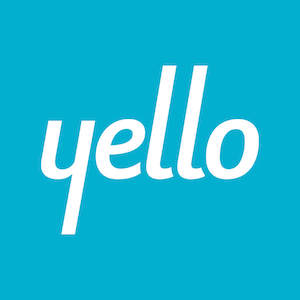A talent community empowers recruiters to create a pipeline of passive candidates who are interested in your company, but aren’t ready to apply to a position. Keep interested parties engaged through this social recruiting method by sharing employment opportunities, referrals and career advice centered around the needs of both the business and the candidate. Talent communities also offer an authentic way for recruiters to offer candidates a unique view of your company, keeping members up-to-date on company news and relevant career opportunities. By cultivating an active talent community, organizations will have a proactive way to stay in touch with passive candidates, letting recruiters nurture these relationships until they’re ready to explore new opportunities within the company.
Why should a company build a talent community?
Building a talent community can help any organization relieve the pressure of needing to quickly find ideal candidates for in-demand positions. A talent community opens up a pipeline to candidates who have actively or passively engaged with your hiring team. A talent community also offers a more personal approach to candidate engagement, allowing your business to speak to current, former and potential employees about mutual goals and interests surrounding your industry.
How to bring your talent community to life
Putting together a talent community is a great way to bring your talent recruitment process into the 21st century. From engaging company alumni to setting up text recruiting, hiring managers have a variety of software and person-to-person solutions to build the perfect talent pipeline to meet any current or future hiring need. Follow these eight steps to start bringing your talent community to life:
 1. Start using candidate relationship management software
1. Start using candidate relationship management software
The easiest way to keep candidates engaged is to implement candidate relationship management software (CRM). Recruitment CRM software easily captures candidate information, qualifications and experience in one central location, allowing recruiting teams to access complete candidate records and communicate more efficiently through automated email and text campaigns. Even better, candidate management software reduces time-to-hire by supporting multiple candidate pipelines, fine-tuned candidate searches and insights to the candidate journey every step of the way.
2. Automate candidate communication.
Staying in touch with your talent community is crucial to its success. The best way to cultivate an engaged and active talent community is to automate candidate communication. With few hours of up-front prep work, increase candidate engagement and ensure your talent community receives relevant content by setting up email updates and text message campaigns. Keep community members up-to-date on open positions, company news, industry trends, blog posts and media coverage.
3. Segment audiences.
As soon as you’ve automated your text and email campaigns, maximize the reach of this content by segmenting the audiences of your talent community. Begin by organizing your talent community into relevant groups, like technology-focused careers or business-focused careers, so each community receives the most relevant information. Building smaller communities allows you to maximize your reach and impact by offering highly-focused communication specific to their interests.
4. Leverage current employees.
Find out where current employees network with their peer groups. Join online groups, attend local networking events or engage with potential candidates through social networks. Invite candidates you meet to join your talent community. Engaging in the spaces your employees recommend can help recruiters attract passive candidates who could be a strong fit for a future position.
5. Conduct regular job title research.
Take time to research how other companies market similar positions to find alternate job titles and descriptions. When companies use job titles that are unique or highly specific to their company, this makes finding open positions difficult for candidates who otherwise might match under a different set of keywords. With talent acquisition software, build Boolean strings around different job synonyms, like engineer and software developer, as well as different keywords. Identify people who have the right skills for the job and add them to your growing talent community.
6. Attend more career fairs.
College career fairs are often a candidate’s first entry-point into a recruiter’s talent pipeline. By building a strong network of students, especially as freshmen and sophomores, you’ll cultivate a motivated talent community seeking out college internships and dream jobs upon graduation. Campus recruiting software can help assess the return on investment of college career fairs, making sure recruiters only spend time at worthwhile events. Make it easy for students to sign up for your talent community before a college career fair by providing a form on your careers site for students to enter their name, major, expected graduation date and contact details. At the event, utilize campus recruitment events software to help candidates save time by scheduling their own job interviews.
7. Engage with past employees.
Build an alumni network talent community of employees who left your company on good terms. Great employees that needed to leave for personal reasons, pursue other career opportunities, or relocate because of their spouse or family often want to remain connected to an employer that offered a great job experience, and can be a fantastic resource in sharing content or job opportunities with people in their network. Even better, a talent community of fantastic alumni is a great way to attract “boomerang employees” that could ultimately return to your company.
8. Communicate with silver medalists.
When a recruiter has a single open position but two top candidates, a talent community allows them to stay engaged with the runner-up. Keeping in touch demonstrates to silver medalists that your company is still interested in pursuing opportunities with them, even if a specific role didn’t work out. By building a talent community of silver medalists who have shown interest in your company, your hiring team will have a pool of fully-vetted candidates ready to be contacted for the next open position.
Maintaining a talent community
Building a long-lasting talent community takes time and effort. It’s important to stay engaged with candidates throughout every point of their career journey, setting goals and measuring metrics along the way. For more tips on how to authentically build a talent community, check out Yello’s guide to Talent Communities: A Roadmap to Success.



